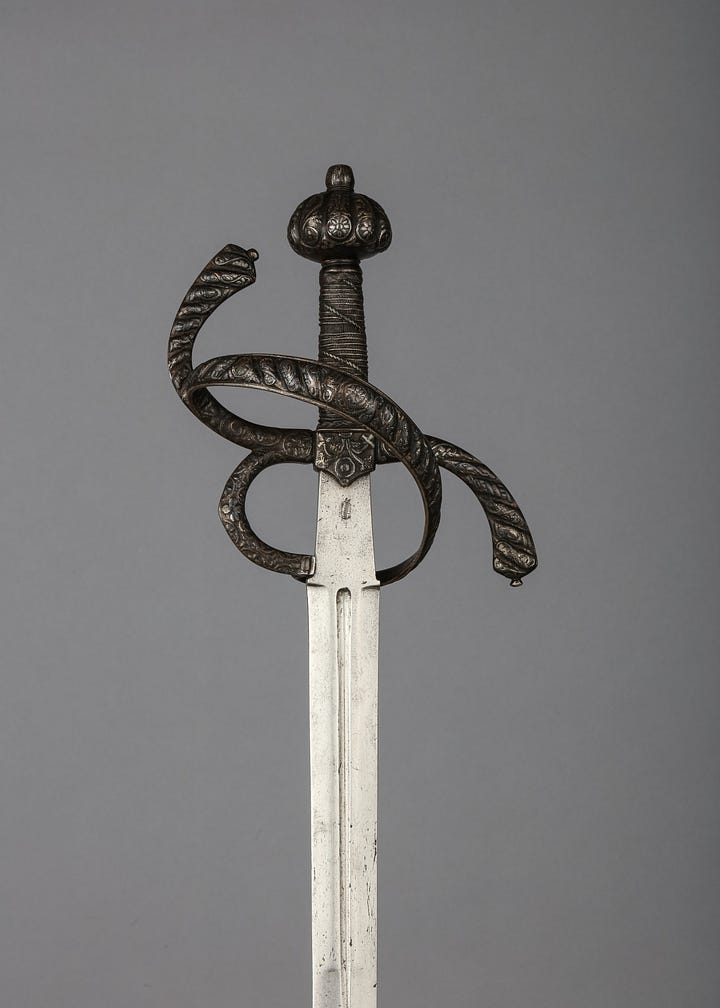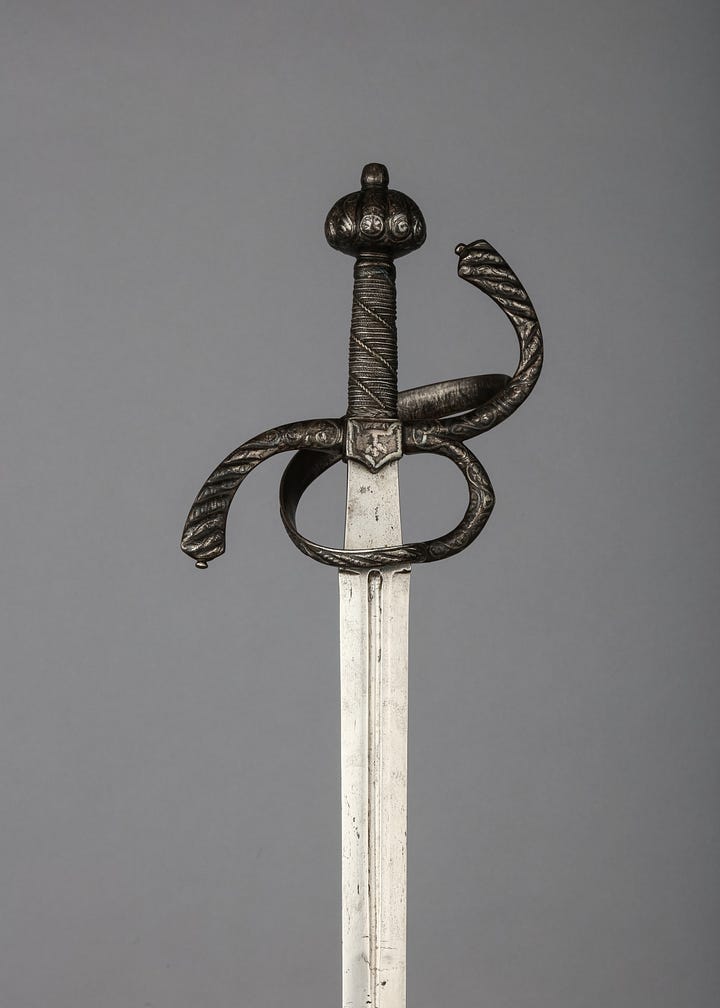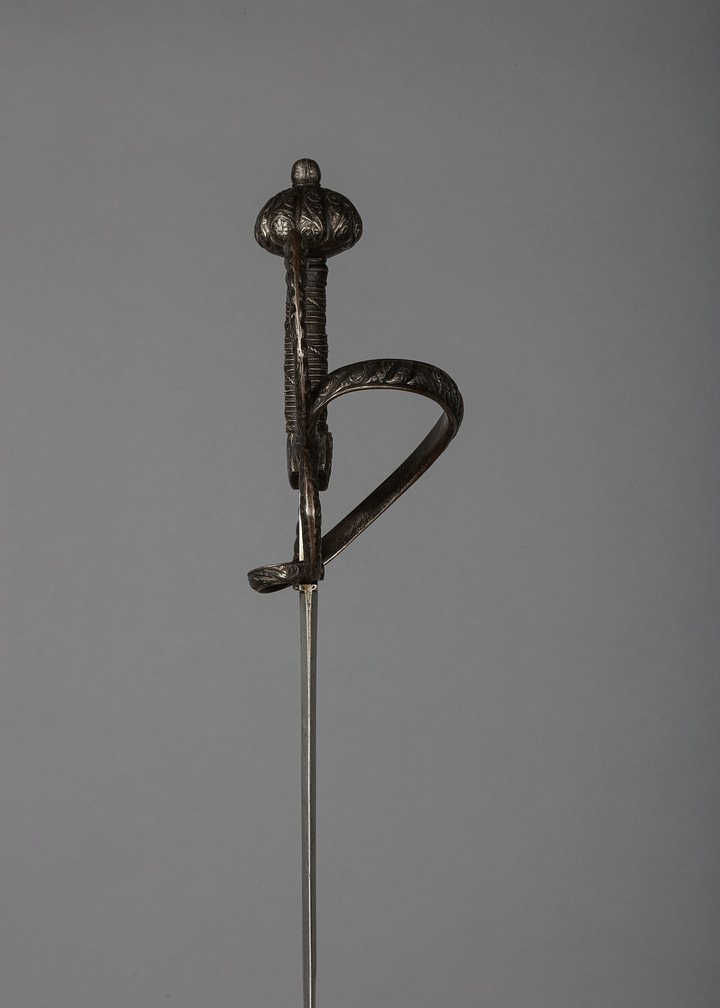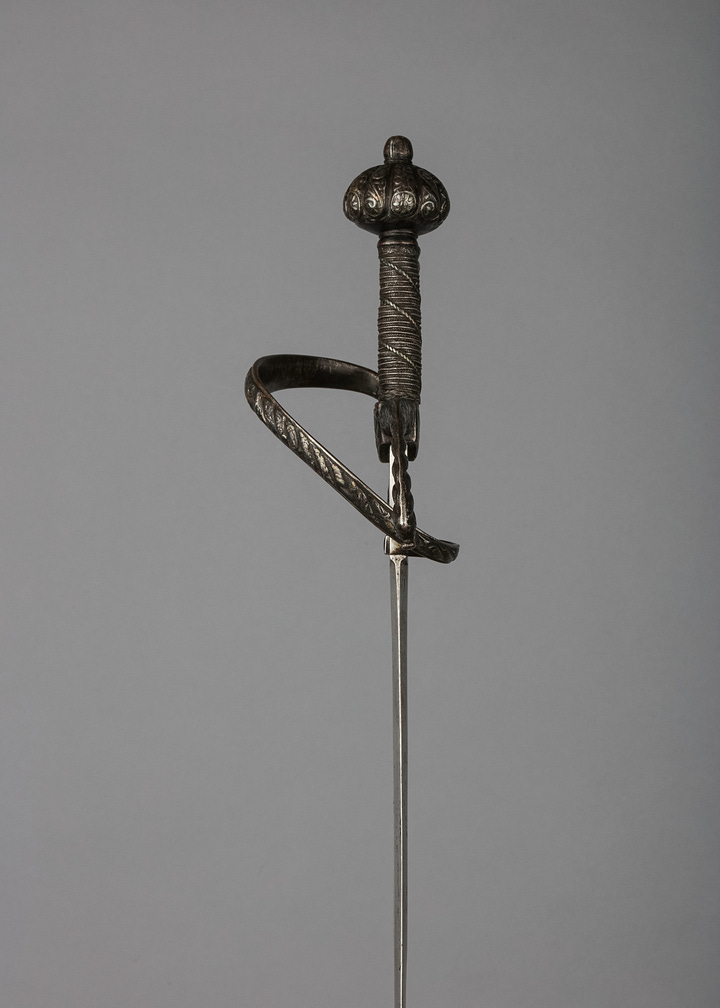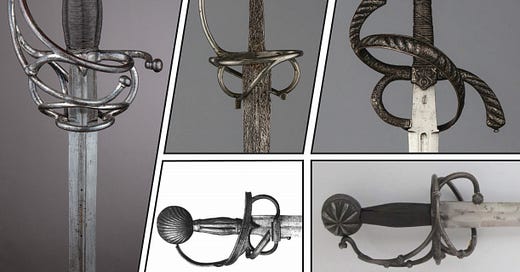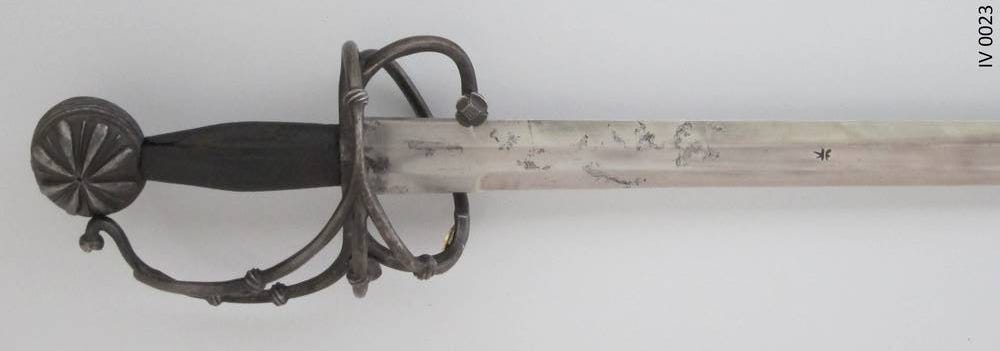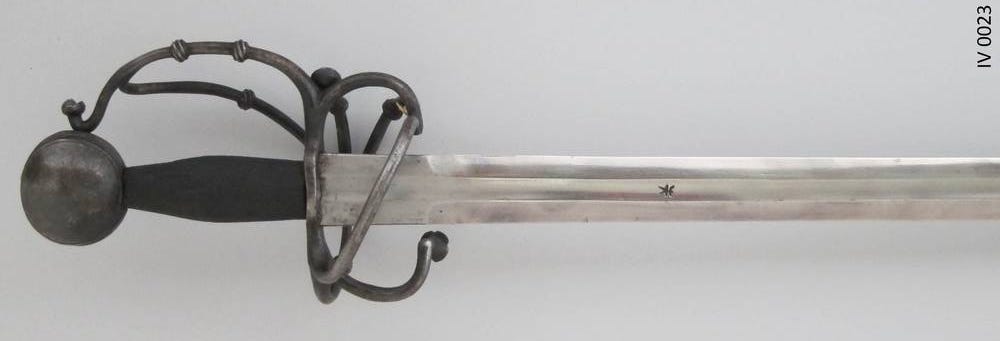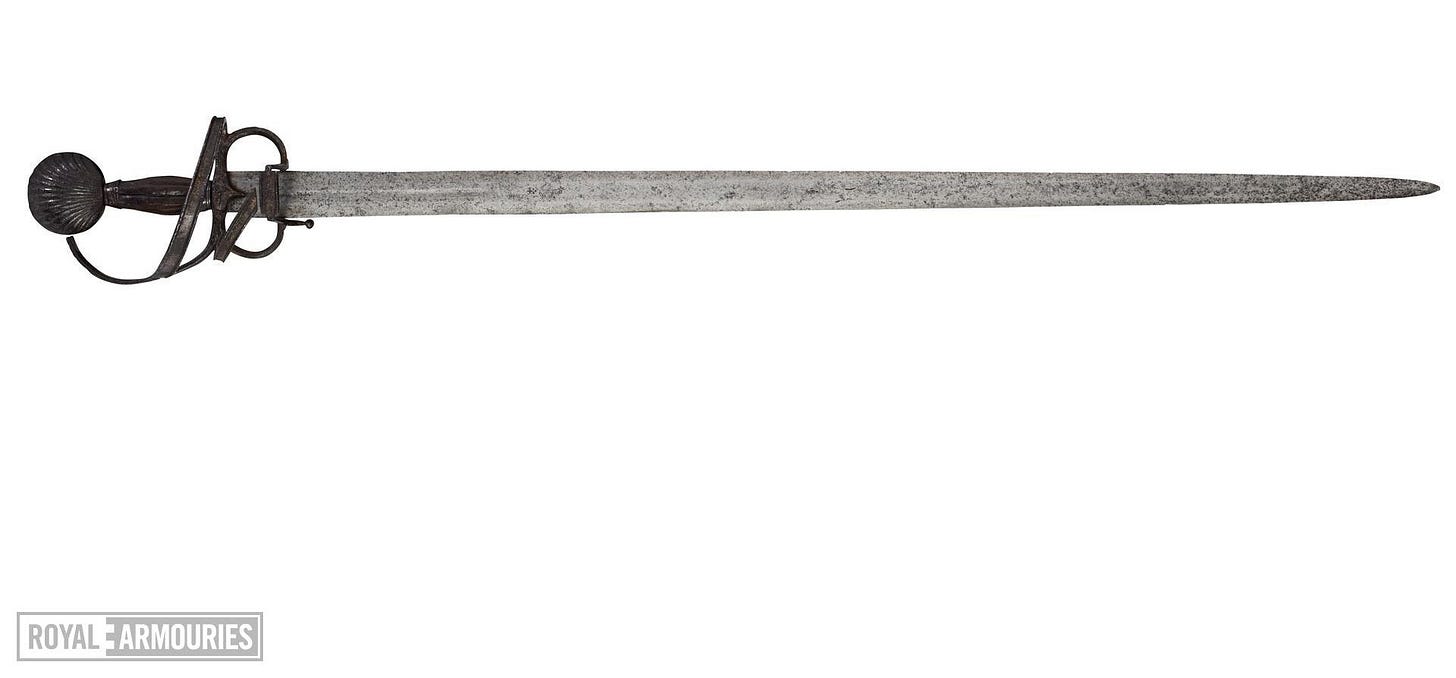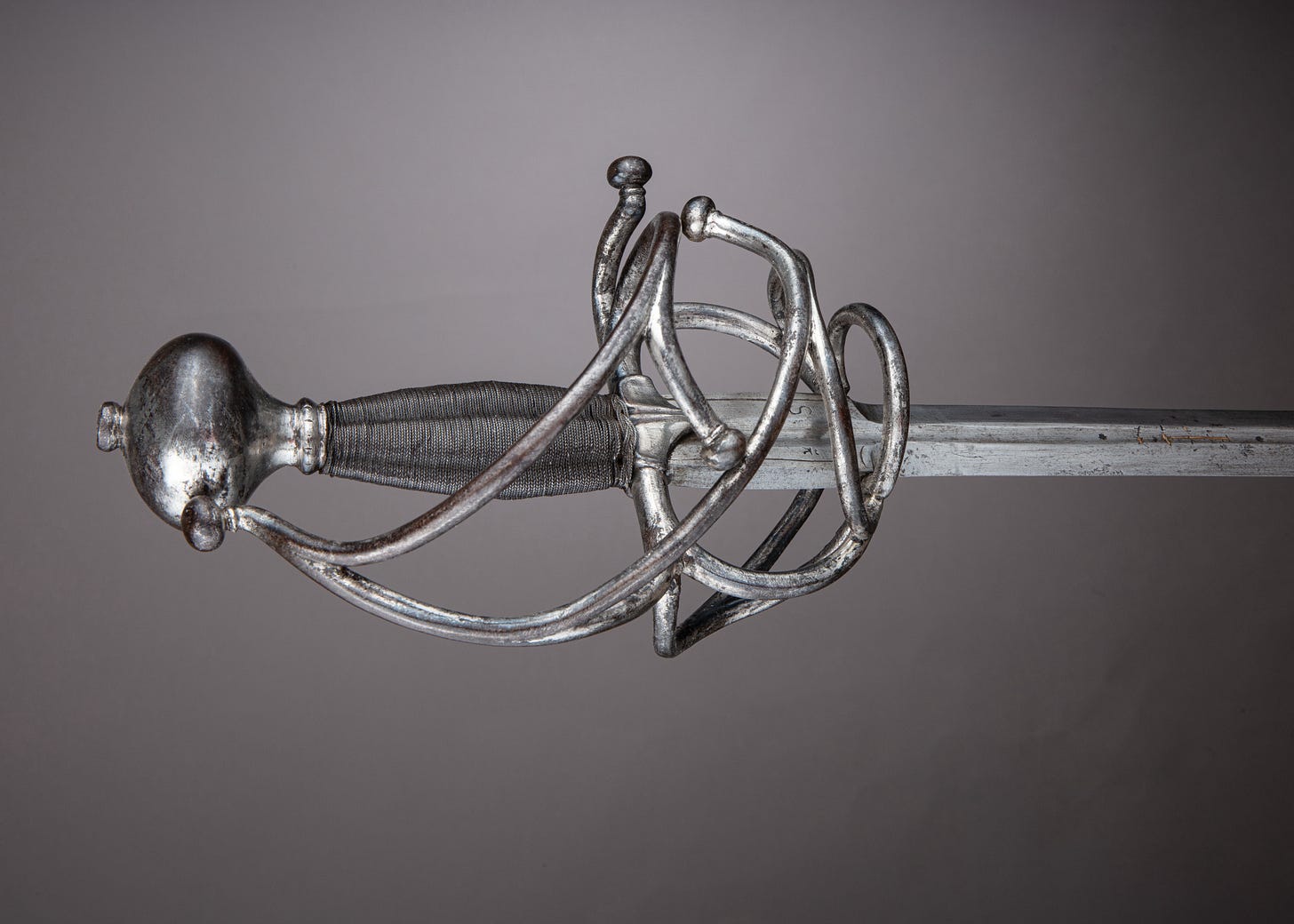When I think of sideswords, I think of the quintessential designs associated with the Bolognese fencing tradition. I see a cruciform style crossguard with fingerings, a side-port ring or finials, possibly a knuckle bow, and maybe a few simple sweeps connecting the side-port to the crossguard.
Yet, when I explore museum catalogues, I come across swords and rapiers that I immediately identify as sideswords, in spite of them having quite unique sweeps arrangements. I want to showcase some below, in particular, designs that stand out due to their lack of quillons.
German Sidesword
Staatliche Kunstsammlungen Dresden
Listed as a riding sword c.1530-1560, 112.8cm in total length, having a 99.3cm long blade and a 1204g weight.
A simple calculation gives us a 13.5cm long hilt construction, which allows us to estimate from photos a grip of around 8.2cm in length. This is a short grip that would allow a wielder to feel the flat pommel at the base of his palm. Inferring the impact the extra weight of the metal bars has on bringing the centre of balance closer to the hand, having a long hexagonal blade would make for an excellent cut and thrust sidesword, one that would feel familiar to a practitioner of the Bolognese traditions.
Italian Sidesword
An Italian creation c.1520-1530, of 111.5cm in total length and 1205g in total weight. The 3.8cm wide blade is of an extreme flattened hexagonal shape for most of its 96cm length. There is a central fuller on each side extending for approximately 20cm and a ricasso of about 4cm long. At the ricasso, the forward edge is cut to form a cusp in order to accommodate fingering the crossguard. The grip would have had thin iron bars over a wrap made of leather or wire, giving it a very elegant look.
Using Albion’s Machiavelli sidesword, a sharp reproduction of an archetypical sidesword design, has taught me that fingering the guard and wrapping my finger around a 3.8cm wide blade can feel a bit uncomfortable. As such, the cusp in the blade is quite welcomed in bringing the index finger inline with the rest, relaxing the overall grip. While the resulting hilt length is 15.5cm long, estimates of the grip length give a value of 8.2cm. Again, we have a relatively long blade, and a short grip that promotes using the pommel at the base of the palm to index the edge. Overall, we have a cut and thrust sidesword that would work well with the Bolognese fencing system, in spite of the more unique sweep arrangement and lack of quillons.
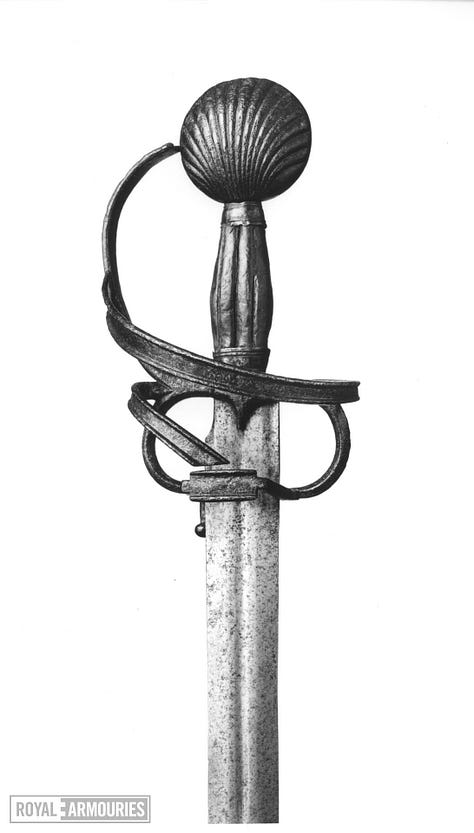
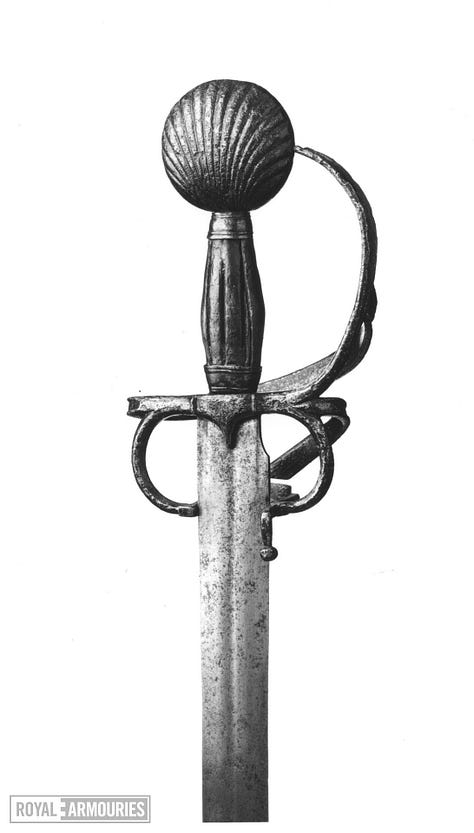

Italian Rapier
An Italian creation c.1540, of 110.2cm in total length and with a 97.2cm long blade.
The hilt constructions is just 13cm long, which results in an extremely short grip of only 7.2cm. Gripping the sword is facilitated by the tapering of the scent stopper pommel, but we are clearly supposed to finger the guard and wrap our finger around the 2.4cm wide blade. While the narrow hexagonal blade would probably be well-balanced by the mass of the sweeps and pommel, this is a sidesword that starts to enter into the use territory of a rapier.
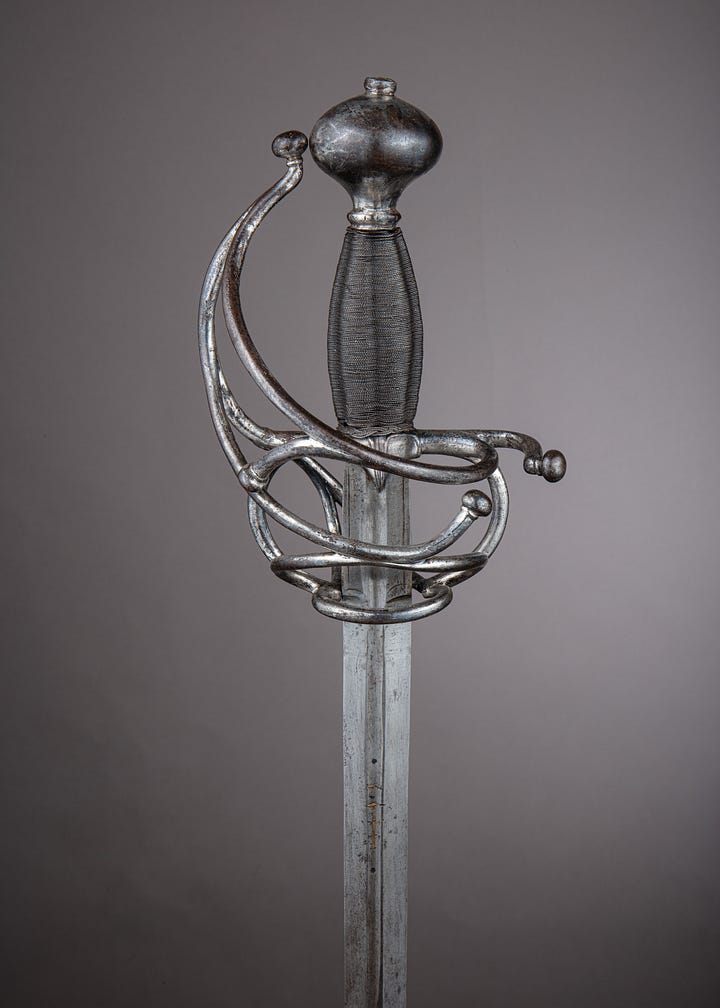

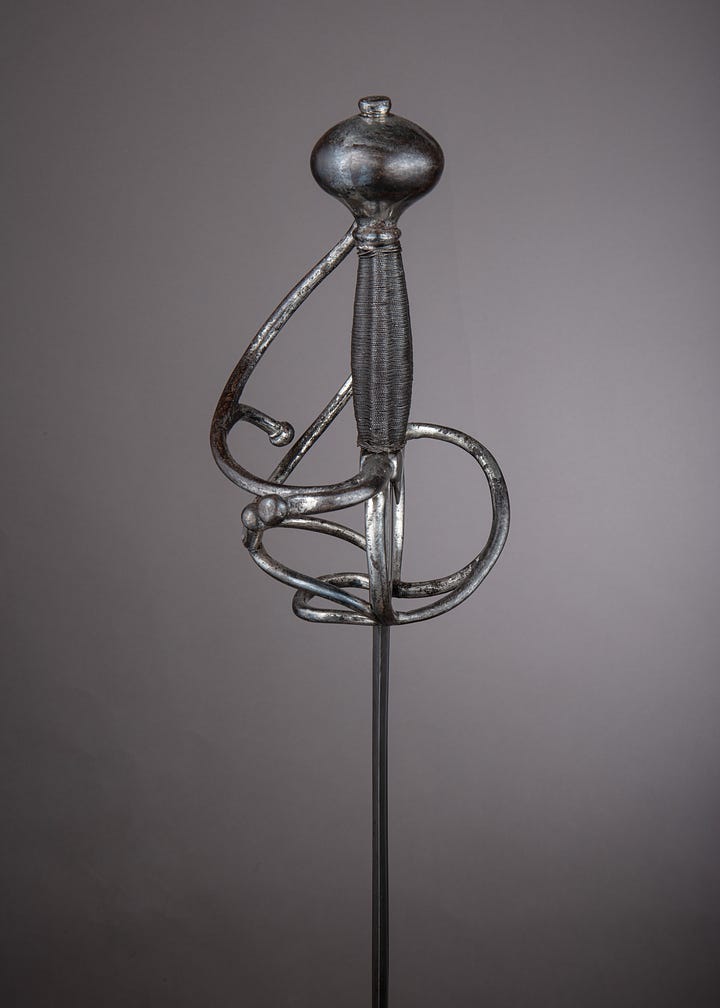
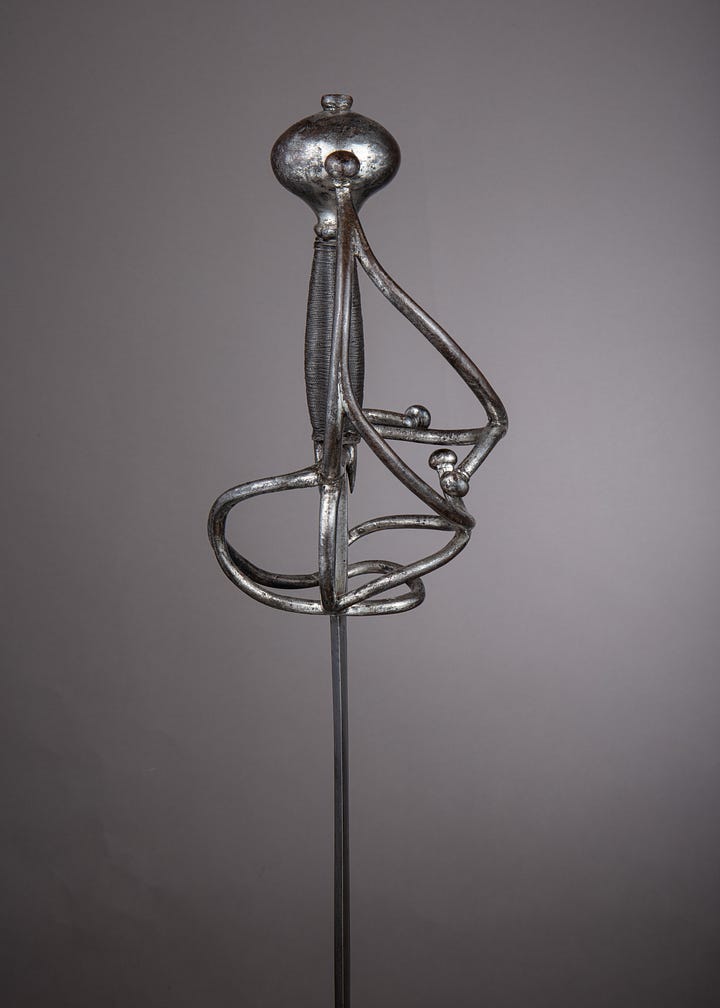
French Rapier
At 126.3cm in total length and 1530.8g in total weight, this French sword from the first half of the 16th century is not small by any account. The blade is listed to be 112.3cm long, allowing us to estimate an approximate 3.2cm wide blade and a small grip of only 7.9cm in length. If we conjecture that the weigh is mostly in the pommel, considering the flat hexagonal blade, we would have a rapier well-balanced around the hand that would work well in a cut and thrust role. While the blade, which has seen better times, would be quite long for a sidesword, it is the simple hilt construction that catches our eyes and recommands this sword as such.
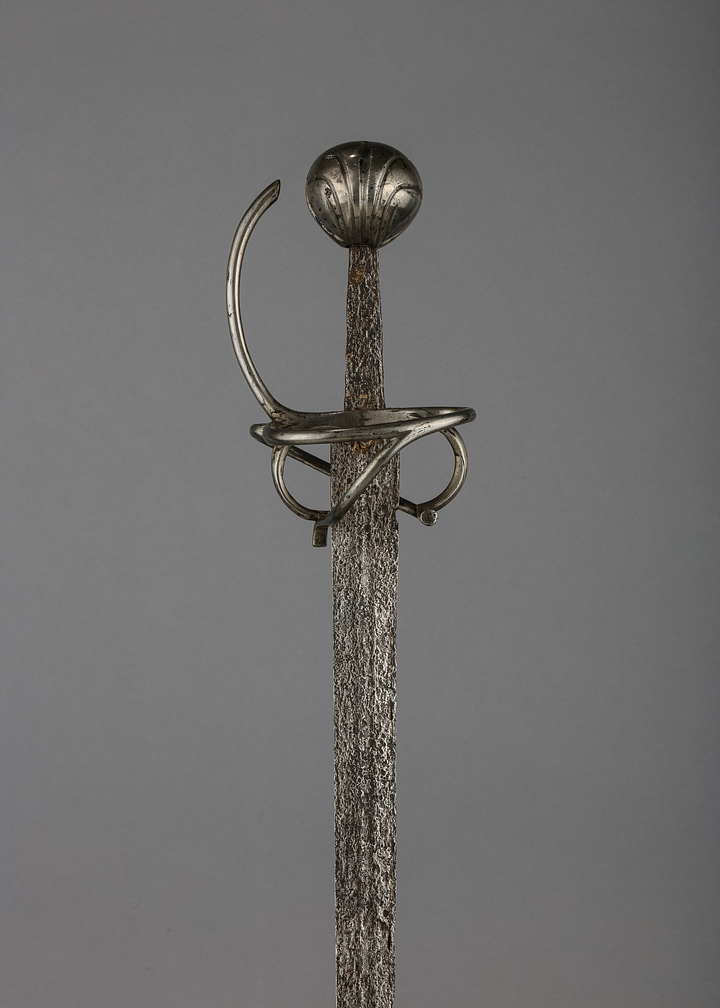
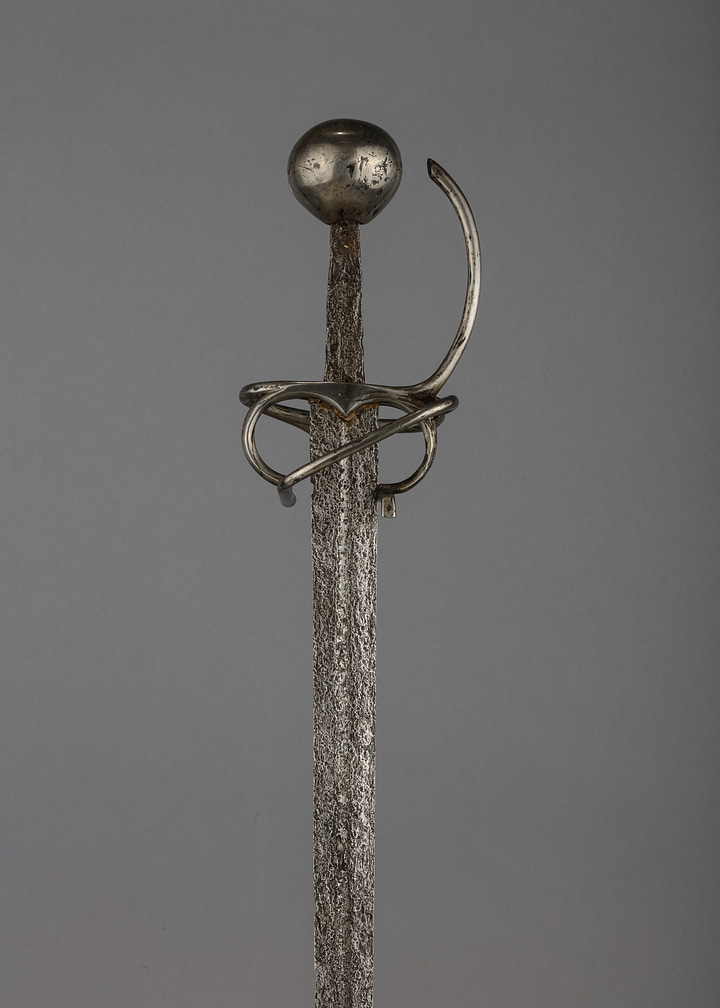
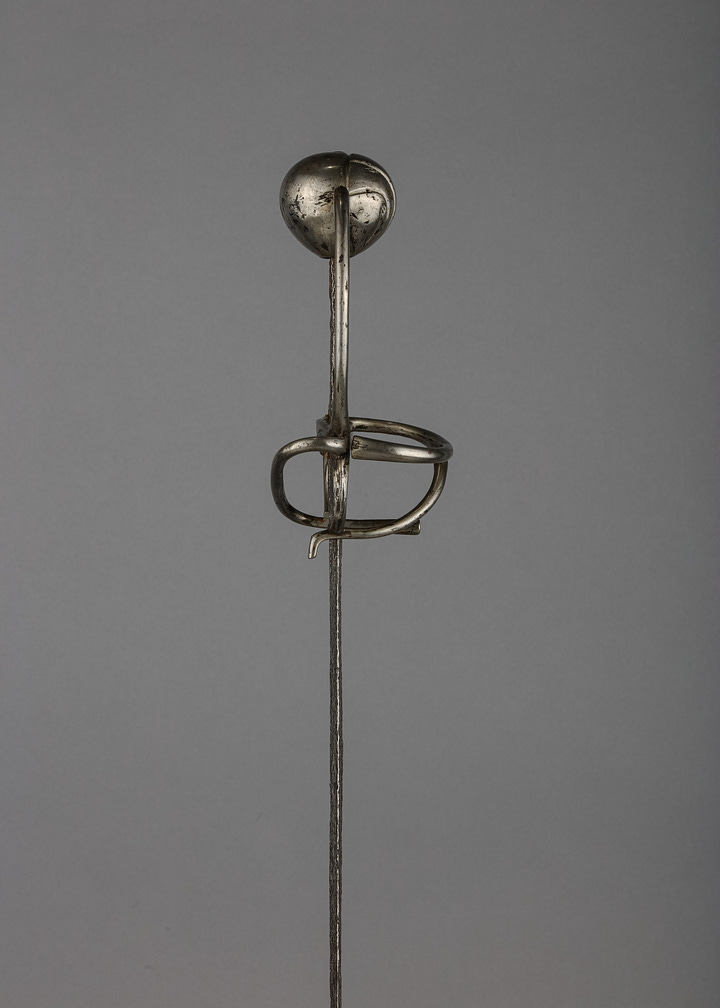
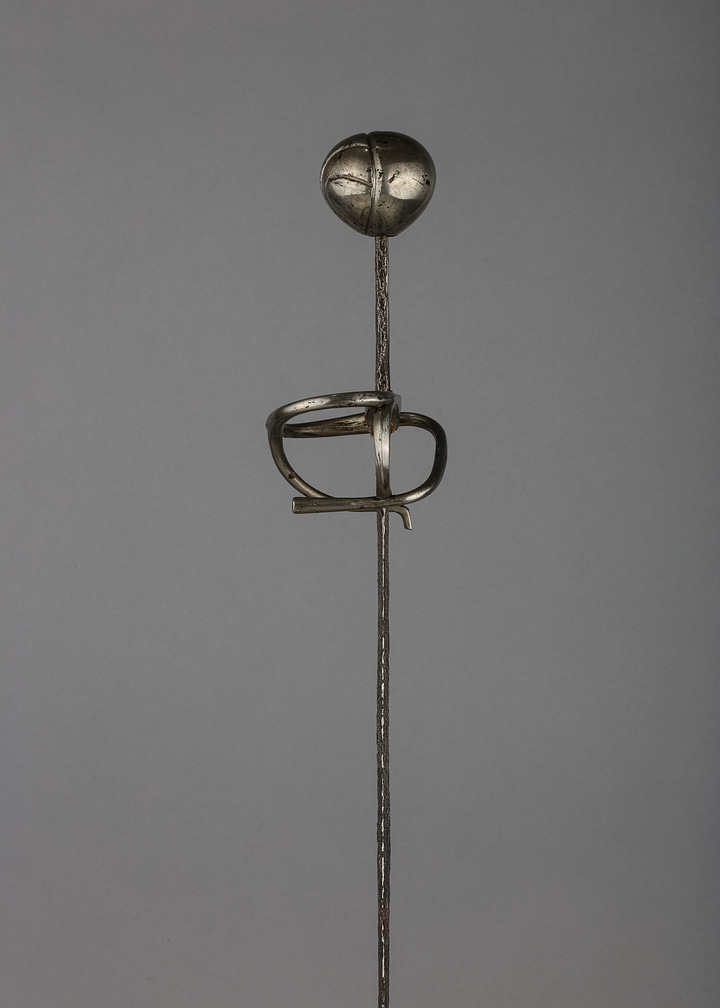
French Sidesword
This 16th century French sword has a length of 116.2cm and a weight of 1360.8g. The blade length is listed at 102.2cm, giving us a 3.3cm width estimate at the shoulder of the ricasso. The grip is quite small at 7.8cm in length, but it’s the simple sweep around the blade that makes this sidesword look quite unique.
